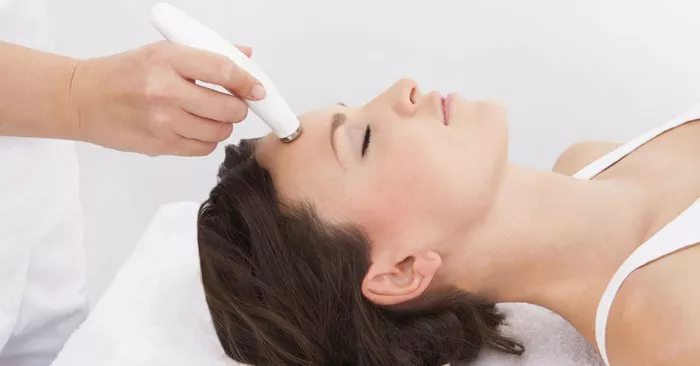Microdermabrasion has become a popular non-invasive cosmetic procedure for rejuvenating the skin and addressing various skin concerns. If you’re considering incorporating microdermabrasion into your skincare routine, you may wonder how often you should undergo the treatment to achieve the best results. In this article, we will explore the ideal frequency for microdermabrasion and provide insights to help you make an informed decision.
Understanding Microdermabrasion
Before diving into the frequency of microdermabrasion, let’s briefly review what this procedure entails. Microdermabrasion is a cosmetic treatment that uses a device to exfoliate and remove the outer layer of dead skin cells. It works by utilizing either fine crystals or a diamond-tipped wand to gently abrade the skin’s surface, followed by suction to remove the exfoliated particles.
Benefits of Microdermabrasion
Microdermabrasion offers a range of benefits for the skin, including:
1. Exfoliation: By removing the outermost layer of dead skin cells, microdermabrasion reveals fresh, healthier skin underneath. This exfoliation process can improve the skin’s texture and tone, making it appear smoother and more radiant.
2. Increased Collagen Production: Microdermabrasion stimulates collagen production, a protein that helps maintain the skin’s elasticity and firmness. This can contribute to a more youthful and plump appearance, reducing the appearance of fine lines and wrinkles.
3. Improved Absorption of Skincare Products: By removing the barrier of dead skin cells, microdermabrasion enhances the absorption of skincare products. This allows the active ingredients in serums, moisturizers, and other topical treatments to penetrate more effectively into the deeper layers of the skin.
4. Treatment of Skin Concerns: Microdermabrasion can help address various skin concerns, including sun damage, acne scars, hyperpigmentation, and uneven skin tone. It can also be beneficial for individuals with dull or congested skin.
Determining the Ideal Frequency
The frequency of microdermabrasion treatments can vary depending on several factors, including:
1. Skin Condition: The current condition of your skin plays a role in determining the ideal frequency of microdermabrasion. If you have specific skin concerns or conditions that require more intensive treatment, such as acne scars or deep wrinkles, you may benefit from more frequent sessions.
2. Treatment Goals: Your desired outcome also influences the frequency of microdermabrasion. If you’re looking for a general skin refresh and maintenance, a less frequent schedule may be suitable. On the other hand, if you’re aiming for more targeted results or have specific concerns you’d like to address, a higher frequency may be recommended.
3. Skin Sensitivity: Individuals with sensitive skin may require longer intervals between treatments to allow the skin to recover fully. The intensity of the microdermabrasion treatment can be adjusted based on your skin’s sensitivity to minimize any potential irritation or redness.
4. Professional Recommendation: It is crucial to consult with a skincare professional or aesthetician who can assess your skin condition and provide personalized recommendations. They will consider your unique needs and guide you on the ideal frequency of microdermabrasion for your specific situation.
Recommended Frequency Guidelines
While there is no one-size-fits-all answer to how often you should do microdermabrasion, here are some general guidelines:
1. Maintenance and General Skin Refresh: For individuals seeking routine maintenance and general skin rejuvenation, it is generally recommended to undergo microdermabrasion treatments every 4-6 weeks. This interval allows for adequate time for the skin to heal and regenerate between sessions.
2. Targeted Skin Concerns: If you’re specifically targeting certain skin concerns, such as acne scars or hyperpigmentation, you may benefit from more frequent treatments. In such cases, your skincare professional may suggest sessions every 2-4 weeks to optimize the results and expedite the improvement in those particular areas.
3. Combination Treatments: Microdermabrasion can be combined with other treatments, such as chemical peels or laser therapies, to enhance results. The frequency of these combined treatments will depend on the specific procedures involved and the recommendation of your skincare professional.
4. Long-Term Maintenance: Once you’ve achieved your desired results, you can transition to a maintenance phase with less frequent treatments. This typically involves scheduling microdermabrasion sessions every 2-3 months to sustain the benefits and keep your skin in optimal condition.
Listen to Your Skin
While guidelines can be helpful, it’s essential to listen to your skin and adjust the frequency of microdermabrasion accordingly. Pay attention to how your skin responds to the treatment and communicate any concerns or changes to your skincare professional. If you experience excessive redness, irritation, or discomfort, it may indicate that you need to extend the time between treatments to allow for proper healing.
Conclusion
The ideal frequency of microdermabrasion depends on various factors, including your skin condition, treatment goals, and professional recommendation. Whether you’re seeking general skin refreshment or targeting specific concerns, consulting with a skincare professional is essential for personalized guidance. Remember to be patient and allow your skin sufficient time to heal between treatments. By following the recommended frequency and listening to your skin’s needs, you can achieve optimal results and maintain healthy, radiant skin with microdermabrasion.


